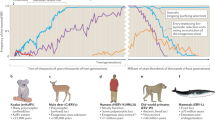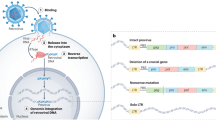Abstract.
Endogenous retroviruses (ERVs) most likely are remnants of ancient retroviral infections. ERVs preserve functions of exogenous retroviruses to a varying extent, and can be parasites, symbionts or more or less neutral genetic ‘junk’.Their evolution has two facets, pre- and post-endogenization. Although the two are not clearly separated, the first pertains to retroviral evolution in general and the second to the fate of repetitive DNA and the evolution of the host organism and its genome. The study of ERVs provides much material for the understanding of retroviral evolution. This sequence archive reflects the history of successes and shortcomings of antiviral resistance, but also of strategic evolutionary decisions regarding genome organization and new gene acquisition. This review discusses retroviral evolution illustrated through HERVs, bioinformatic prerequisites for ERV studies, the endogenization process and HERV evolution post-endogenization, including relation to disease. (Part of a Multi-author Review)
Similar content being viewed by others
Author information
Authors and Affiliations
Corresponding author
Rights and permissions
About this article
Cite this article
Blikstad, V., Benachenhou, F., Sperber, G.O. et al. Endogenous retroviruses. Cell. Mol. Life Sci. 65, 3348–3365 (2008). https://doi.org/10.1007/s00018-008-8495-2
Published:
Issue Date:
DOI: https://doi.org/10.1007/s00018-008-8495-2




